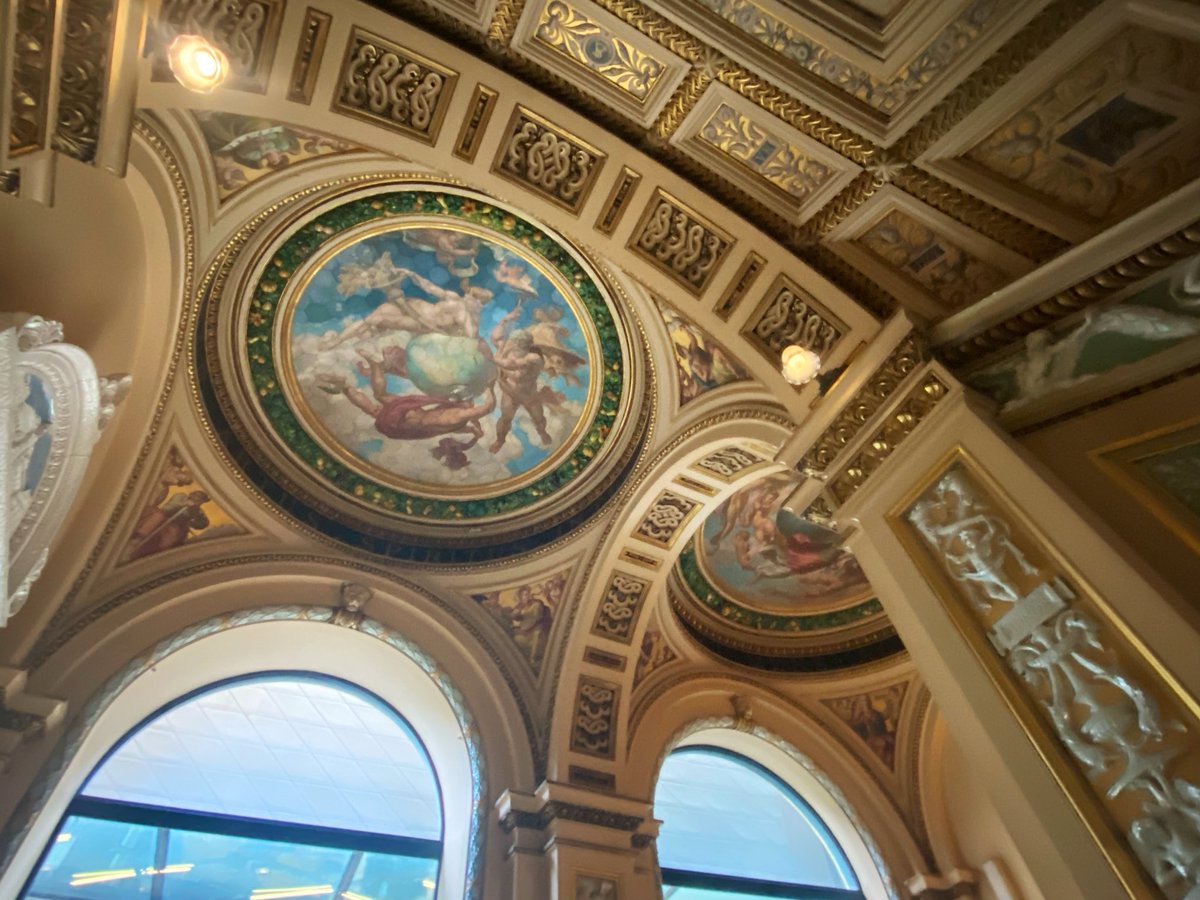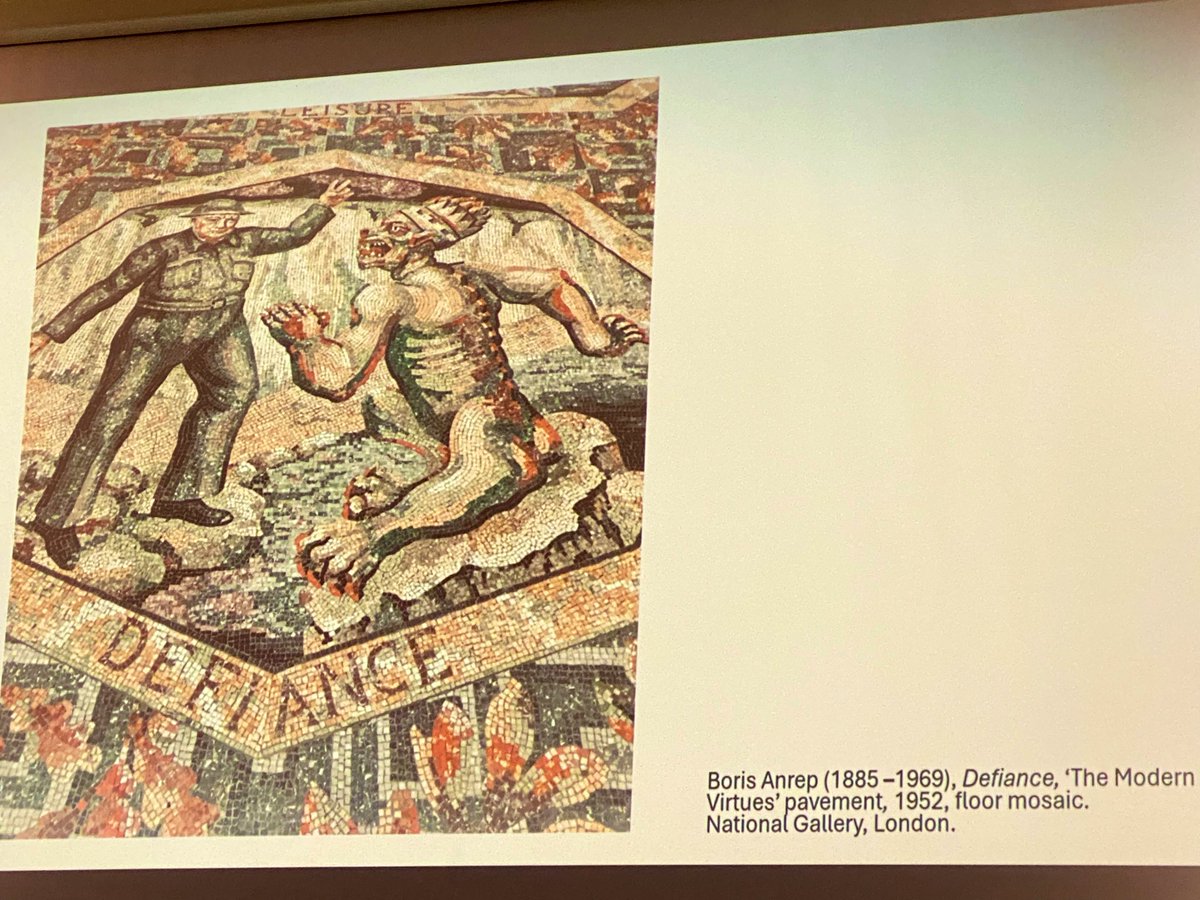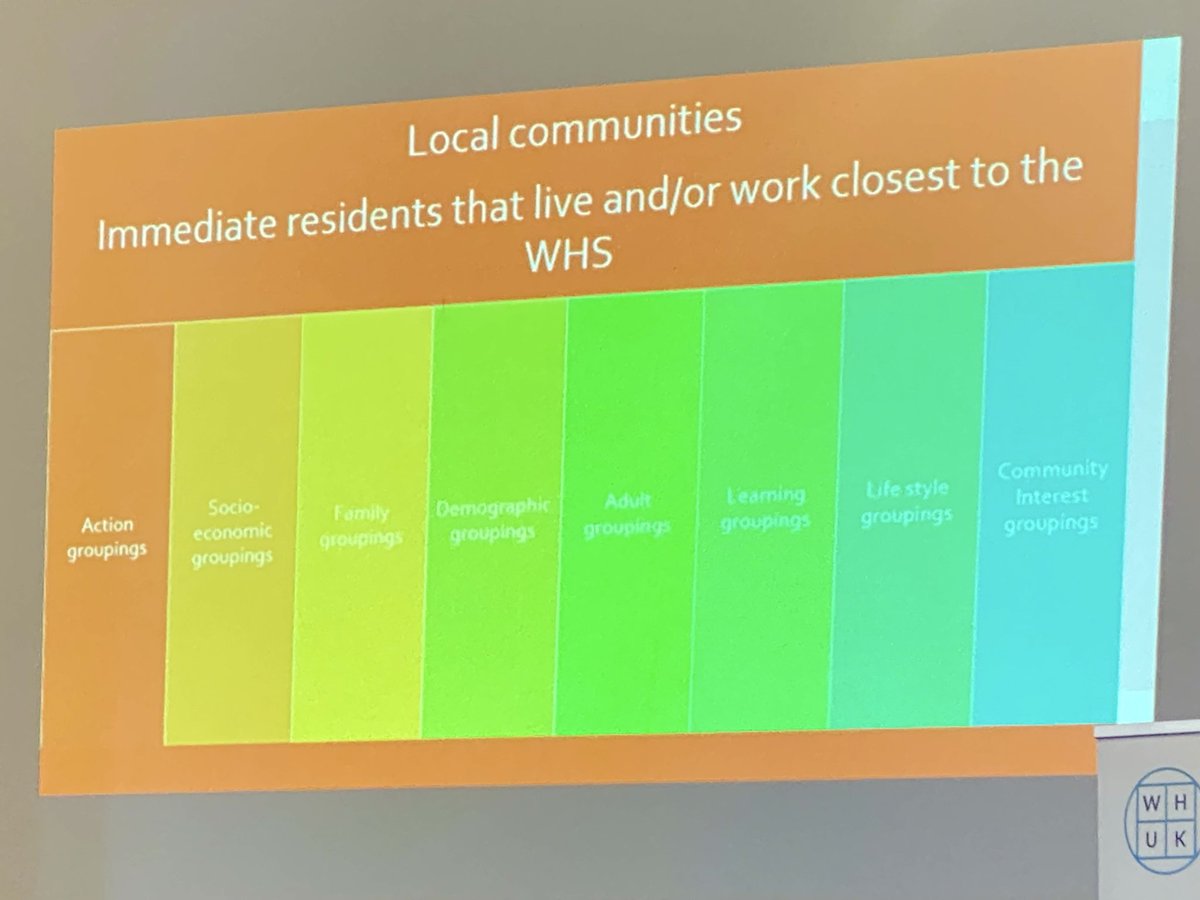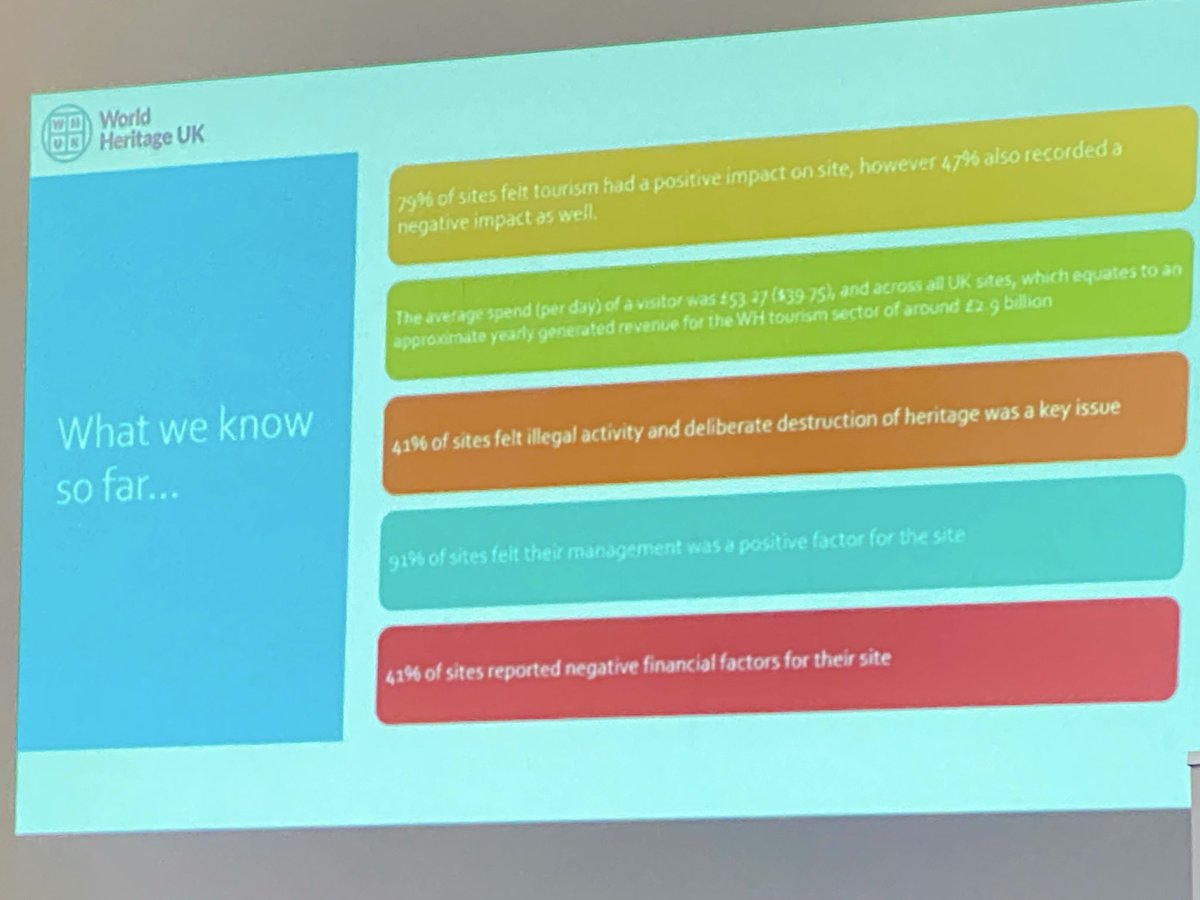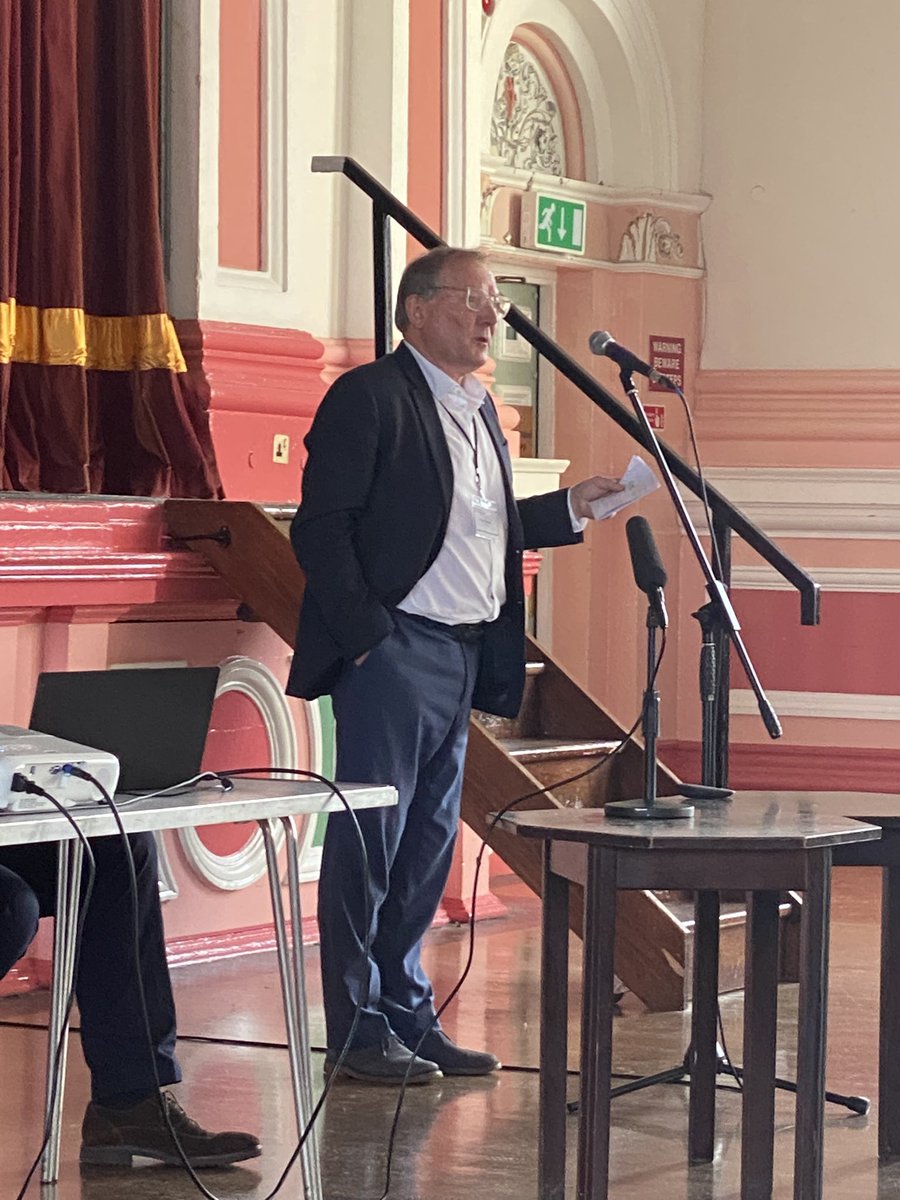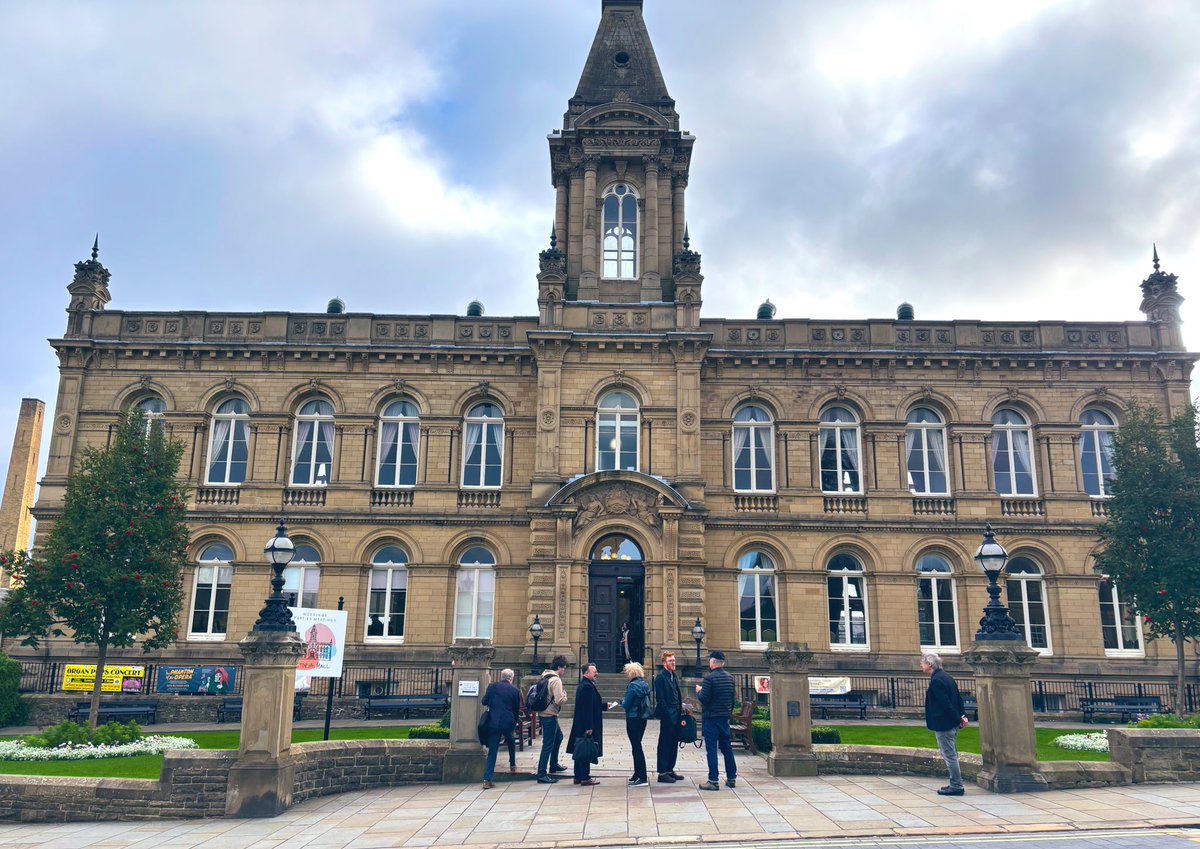Good morning from the #DiverseModernities conference with @CSCA_Cambridge & @createstreets at @downingcollege with @boys_nicholas kicking off proceedings. Good to see the iconic #EgyptianRevival Carreras Factory on the opening slide. 


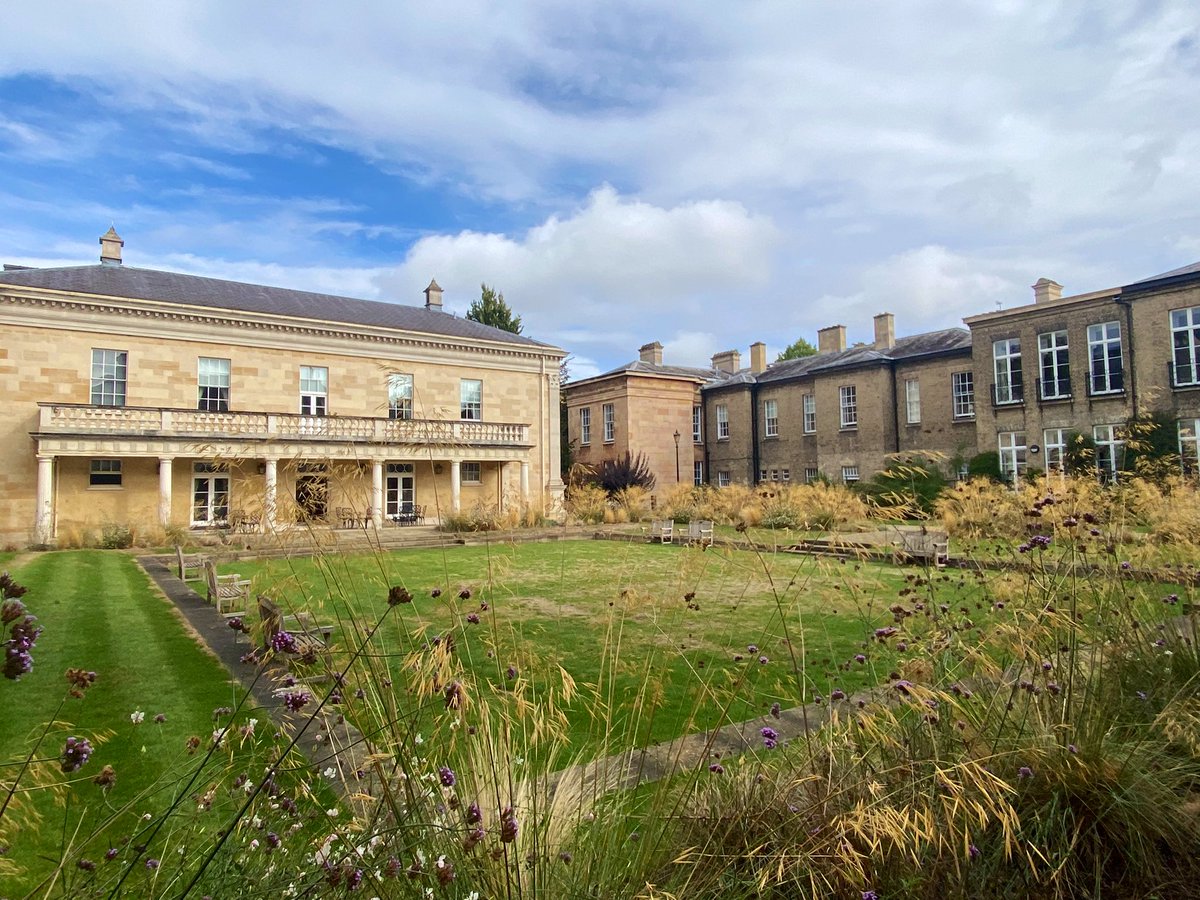
Opening comments from @boys_nicholas include a call to recycling of current buildings. #DiverseModernities
First up @william_whyte of @OxfordPresTrust & @UniofOxford on the classical tradition in 20thC Britain - stylistic shift in 19th from classical to gothic revival. A battle of the styles. Contrast. Aesthetic & moral. Hugely generative of research ever since. #DiverseModernities 







Plurality of styles that we see again in the 20thC. Movement from commitment to classical form to modern forms. Something happened to Basil Spence says @william_whyte 🤣 (slide 2) But not an absolute shift - plurality in early 20thC. #DiverseModernities 





70s onwards a shift again to a new modern classicism. Architects such as Outram shift taste & practice. Battle of the styles isn’t the best way to understand this. #DiverseModernities 







Practical, taste changes. Mortgage challenges with flat roofs. Classicism becomes a linguafranca. Connection with Christian outlook - bringing order to the modern world. But classicism was always there even within the modern movement & Le Corbusier. #DiverseModernities 



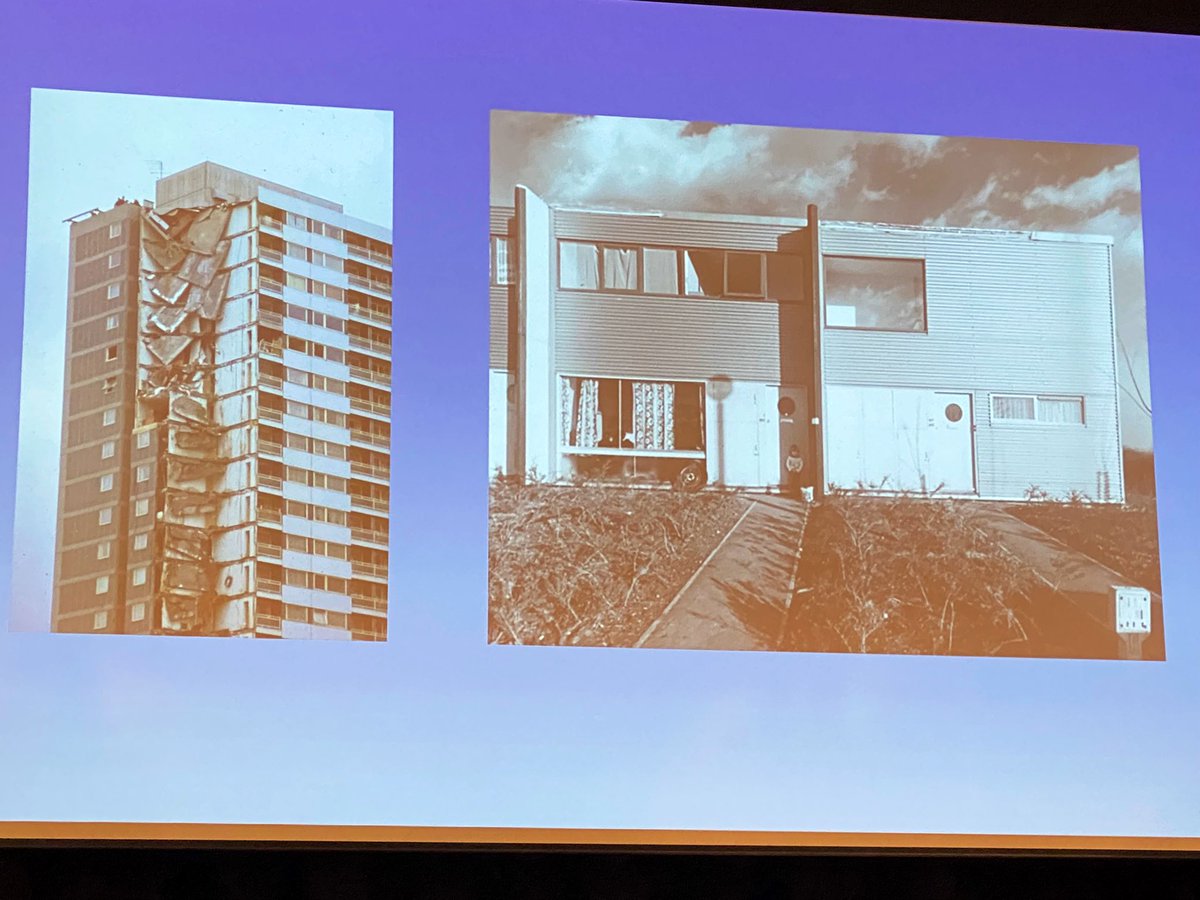



Willow Walk is cited as a modern design in the ‘Georgian tradition’. Barbican - inspiration from Coliseum. Classicism even a part of the most ‘modern’ seeming architects. #DiverseModernities 







Each generation re-interprets classicism in its own time & represents it even in what seem like unrecognisable ways. Loving the Outram here. #Tutankhamun100 @william_whyte #DiverseModernities 

Next up today is Alan Powers of @C20Society on ‘Seeking a non-binary view of architecture’. #DiverseModernities ‘architects had been afflicted by style worry for years’ 🤣 







We can’t just refer to ‘modernity’ as anything that happened in a certain period of time. There really are #diversemodernities. Language is a challenge here, as are labels. Binaries are familiar to us but architects have also thought in non binary ways in 20thC. 






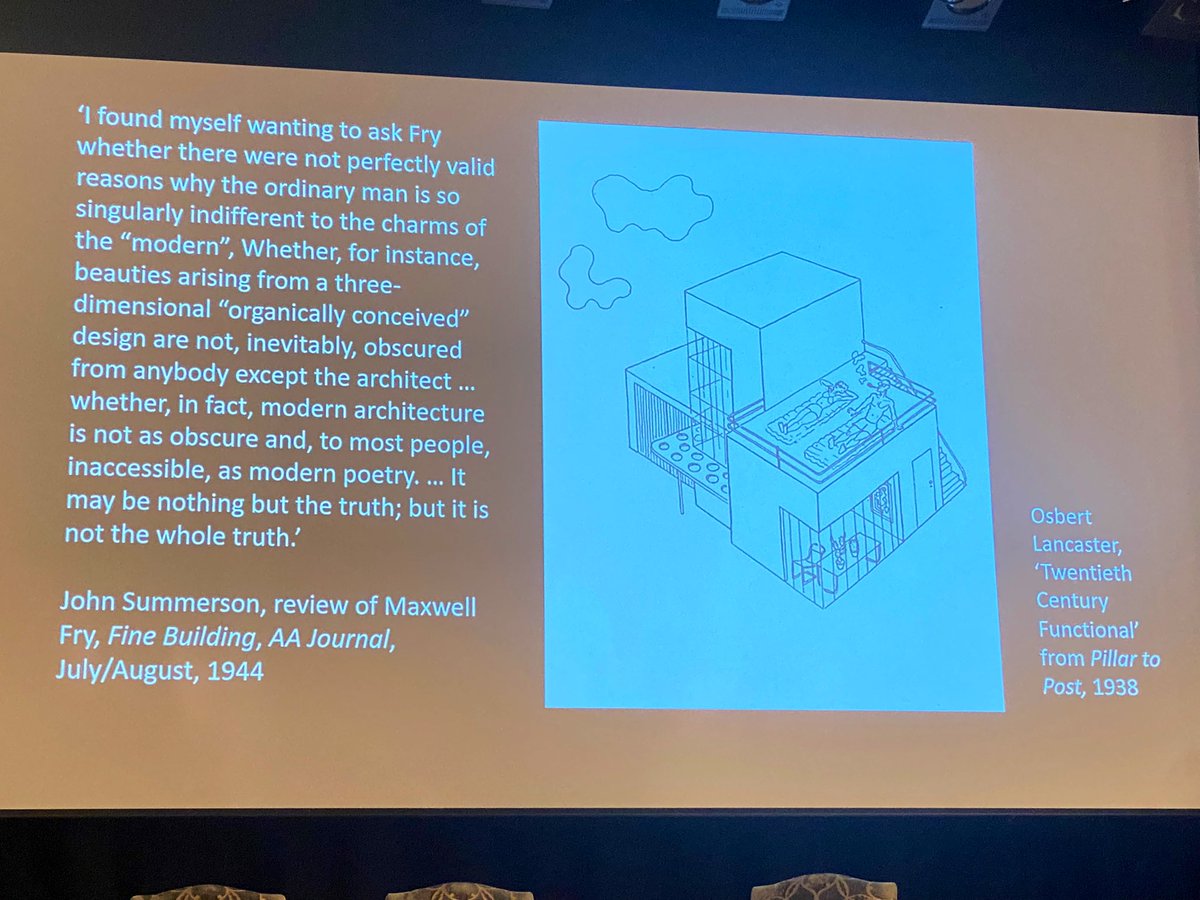
By the way 👀 #EgyptianRevival influence here I think 

Some architects working explicitly in non-binary ways. Hill, Burnet, Goodhart-Rendel, Crickway. Burnet, for instance, selected based on what was appropriate for particular contexts in an thoroughly intentional way. #DiverseModernities 







Then there are hybrids. Is it modern, is it not? But some very effective examples. Looking at this you see it is all more diverse & wonderful than we think. #DiverseModernities 



Goodhart-Rendel was cited as saying “style was the least important of all the unimportant elements of architecture”. (I’m filing this for a read later with some of his work lesseminentvictorians.com/2021/03/01/h-s…) #DiverseModernities
Finally in this session is Julian Holder of @UniofOxford talking about the huge proliferation of neo-Georgian. #DiverseModernities 







Pevsner was scathing of neo-Georgian designs. Said of Nottinghamshire New County Hall - not yet complete but already ‘dead as mutton’. #DiverseModernities 





There was a question for those looking at modernism - how diverse can you be in terms of design & still be ‘modern’? Can you still like traditional design & be ‘modern’? #DiverseModernities E.g. Blunden Shadbolt’s neo-Tudor design: c20society.org.uk/news/cobblesto… #DiverseModernities 







We need to go back & look again & more deeply at the multiple different & very fine work of a whole range of different architects of the 20thC from neo-Georgian and neo-Tudor to the white walls of modernism. #DiverseModernities 



A section now at #DiverseModernities of Typological case studies beginning with Max Sternberg of @Cambridge_Uni on the Neasden Hindu temple in London. Hi do temples have to be self load bearing (no steel) & fit for English climate. Bulgarian limestone & Italian marble. 



All the stones had to be shipped to India where all the hand carving had to happen. ‘Built in India, made in London’. Designs focusing on the natural environment. Statues are manifestation of divinity - offerings & bathed daily, makes the temple come alive. #DiverseModernities 





Amazing story of community fundraising, sacrifice, 7 million aluminium cans contributed £70k through community collection. Many volunteers coming in the evening polishing stones, doing electrical work… #DiverseModernities 



Great presentation by Tilak Parekh @Cambridge_Uni doctoral candidate @TilakParekh
Next up Clare Price of @C20Society & @UniofOxford on Church Building in a Secular Century - here are RC Catholic Cathedrals in Liverpool & Brentwood #DiverseModernities 



Interwar period Church of England funds to build had dried up - economic situation as well as changing views of giving. What was expected of a worthy and appropriate church building? For posterity, well built… #DiverseModernities 

Here’s a 20s example - fundraising didn’t match ambition. Part build & wait to add sections. This became less viable. Build smaller, simpler, brick & cheaper materials. Some simpler well chosen details. Hidden structures such as concrete. All considered gothic most appropriate. 







Roundthorn Manchester. Simpler more appropriate style for the area. Congregation differed from architect however & half PPC resigned. Ended up with incongruous chancel. #DifferingModernities 



Change in worship patterns. Here Anglo-Catholic inspired by Assisi - the parish communion. Seating right up to altar. Congregation close. Altar brought closer to congregation. Congregation have considerable say making the interior innovative with exterior more traditional. 





Greenford, another parish communion church along similar lines. Congregation wrapping around altar. These buildings are often thought of as traditional but there is innovation here in materials, plan, use & within what was accepted in the period. #DiverseModernities 



Finally this session Jonathan Clarke - inter-war speculative offices. Steel skeletons, “stripped classicism” 







Classicism of this sort went out of fashion in 30s but reached zenith of decorative experiment/embellishment in 20s. 





Bush House was American-style ‘big business classicism’ - a whole new approach to fenestration. Others followed this approach to balance functional & artistic expression. Sparing classical details to avoid monotony. 







It was noted that columns ‘didn’t earn their keep’ so we’re used sparingly but in sites such as Africa House they were employed to do so by bearing loads. Victory House also used slender columns to avoid blocking light but to bear loads. #DiverseModernities 





Postmodernists have rediscovered some of these approaches & styles - many used in the city of London. #DiverseModernities 

First this afternoon’s Heritage Perspectives session at #DiverseModernities is Charles O’Brien on Pevsner Guides @YalePevsner In the background Pevsner did appreciate what some of the traditionalists were doing. Ballie Scott in Cambridge & Nuffield Oxford tower for instance 







But often praised neo-Tudor as well as George Crawley’s revivals such as at Crowhurst Place en.wikipedia.org/wiki/Crowhurst… 

He also played an important part in the first rounds of listing of 20thC buildings.
Those who took over from him also played a big part in next stages of protection & in revising the guides to widen scope of interest. He was also not blind to problems with the ‘modern’ architecture he had supported. He thought some of the towers had gone too far & were ugly 

Tragedy of sites such as Firestone, pulled down overnight modernism-in-metroland.co.uk/blog/the-life-…
Next up, Debbie Mays @HistoricEngland on 20thC buildings and the challenge originally of pre-Victorian cut off dates. 19thC listings were ‘daring enough’ in inter-war years. #DiverseModernities 





Pevsner’s 50 buildings that captured the spirit of the age. Then gradually added to. Now there is a 30 year rule with the cut off rolling forward. After 2000 more thorough process, including consultation. A pivotal cog in the planning system. #DiverseModernities 



Challenge where you get a building of interest due to connections but where the building is changed or has no historical or architectural merit. More suitable for a place marker? 

Now a plan for types of assets, thematic programmes looking at e.g. intangible place connections. Research & understanding is key to good heritage protection. Recent Saunders enquiry on future of listing. Programmes aim to correct ill informed reactions to certain types of asset 





List is now a tool for research & also allows people to ‘enrich the list’ historicengland.org.uk/listing/enrich… Now @HistoricEngland is working on an open data hub. Designation helps secure retention of redundant stock 



Mention here also of the #CulturalHeritageCapital work with @DCMS & guides unpacking how listing works with different assets and types of heritage. Current 20th C initiatives include those on the third slide. #diversemodernities 





Also mention of Heritage Action Zones, the Levelling up and Regeneration Bill, indemnification of BPNs and pilot toolkit for local Authorities. #DiverseModernities 





Finally in this session Harriet Wennberg of @INTBAU - creating longevity into the future in what we build now. 39 chapters across the world. New traditional building & architecture round the world. #DiverseModernities 



A couple more including the @downingcollege theatre we sit in today. 





Also a look at critical regionalism thinking about local tradition & context in design, bad attempts to copy traditional approaches where proportions are wrong etc… and new opportunities to think about necessity creatively. 





We are now joined by the Minister for Arts, @DCMS Lord Parkinson talking about the importance of place, architecture & community involvement in it. #DiverseModernities 

Importance of place making & pride in place. Importance of good design & beauty in the public realm. The Levelling Up & Regeneration Bill give us an opportunity you think about these themes says Lord Parkinson. #DiverseModernities
In conversation with the minister @boys_nicholas says there is a virtuous circle of place to be won. The preservation & protection & use of existing buildings and good design and future place making. #DiverseModernities
@threadreaderapp unroll
• • •
Missing some Tweet in this thread? You can try to
force a refresh













